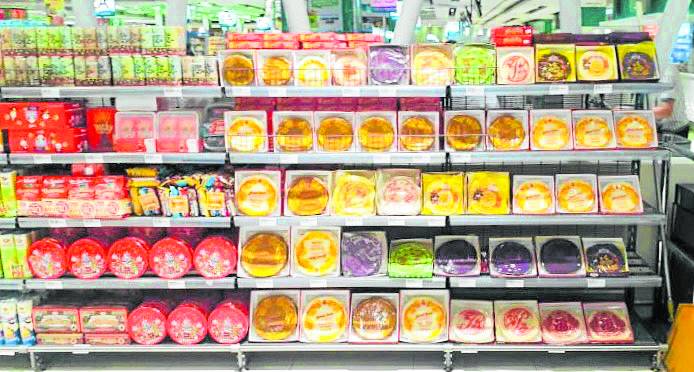Happy Chinese New Year!
This year, we celebrate Chinese New Year, or the Spring Festival or Lunar New Year, from Jan. 31 to Feb. 6. Oh how I miss traditional celebrations complete with dragon dance, feng shui readings with Master Joseph Chau, and, most of all, the auspicious food!
Thankfully, in spite of the pandemic, the tradition of sending “tikoy” has been honored. Thank you to Mr. Teddy Keng of Landmark for my first tikoy for 2022! (In case you missed the news, Landmark has opened another branch in Bonifacio Global City and they are now also available on Pickaroo! Now that’s prosperity for us all!)
Nián gāo
Tikoy is a rice cake made from glutinous rice, lard, water and sugar. It has its origins in a Chinese delicacy called Nián gāo, which is also called New Year cake or Chinese New Year’s cake.
The pronunciation of niangao sounds like “year high,” which symbolizes a higher income, a higher position, the growth of children and generally the promise of a better year so it is considered good luck to eat it during the Chinese New Year period.
Tee Keuh
This delicacy is said to have been brought to the Philippines in the late 19th century by Hokkien immigrants and popularized in 1912 by Mr. Chua Chiu Hong when he established Eng Bee Tin in Ongpin in Chinatown. But here it is not called niangao but tikoy, from the Hokkien word “tee keuh,” which means rice cake. In the Philippines, this delicacy is cooked by coating the rice cake with a beaten egg and then frying so that the luck it brings can “stick” the whole year round.
The auspicious character for prosperity is usually engraved or printed on the top part of the tikoy. These are also usually packaged in red boxes with Chinese prosperity symbols.
The package I received, however, was not the usual red one but brown. (In feng shui, brown represents the earth. I hope this means I will buy or build a new house this year! Or perhaps buy a farm!) Curious on this variety, I visited the Eng Bee Tin site and apparently, they now have various flavors of tikoy: ube, dulce de leche, cheese, pandan, strawberry, muscovado and the traditional white. Wow, now I want all of them! They also have “ready to eat” individually packed Tikoy Rolls, also with a variety of flavors such as peanut, sesame and pandan. (Visit www.ubedelivery.com to order.)
The Monster
The nián gāo also has a mythological history to it. Legend has it that there is a monster named Nian who lived in a cave in the mountains but who would come out to hunt when hungry. People feared that the monster Nian would resort to eating humans in the winter because animals went into hibernation, so a villager named Gao, in anticipation of the possibility of the monster coming down and eating them, left rice pastries outside the villagers’ doors for the monster to eat instead. It worked! Monster Nian found the rice pastries, ate them, and happily went back up the mountain. Relieved, the villagers celebrated and named the rice pastries “Nian Gao.”
The God
Another legend is that tikoy is a gift offered to the “Kitchen God” or God of the Hearth, who is also the official guardian of the family. An altar for him is located just above the stove, a position from which he can watch over the family’s conduct and where incense and offerings are made. He supposedly makes an annual trip to heaven just before the first day of the new year to report the good and bad activities of every household for the previous year to the Jade Emperor.
Wily humans offer the Kitchen God tikoy to make his mouth so sticky that he is prevented from saying anything bad about the family that gave him the tikoy! (Perhaps it can now be given to the “Marites” or chismosas, too!)
The General
There is also the story that after the death of Wu Zixu, a general and politician of the Wu kingdom who lived from 559–484 BC, when the king of Yue, Goujian attacked the capital of Wu, the Wu army and citizens were trapped in the city with no food and dying of starvation. That was until someone recalled Wu Zixu’s words: “If the country is in trouble and the people are in need of food, go and dig three feet under the city wall and get food.” The soldiers did just that and found that the foundation had been built with special bricks made from glutinous rice flour. This saved the people from starvation and what they cooked from the bricks became the original niangao. It was then served every year to commemorate Wu Zixu and later became known as the Chinese New Year cake.
Today, tikoy represents friendship and prosperity. The round shape symbolizes money while the taste symbolizes sweet relationships. And now that we can also get it in various flavors such as ube, pandan, sweet corn, and—like what I got —chocolate, this can only mean that our friendships are stronger and our lives are sweeter! But remember that as with the Kitchen God, it will only be so if there is no badmouthing! May the Year of the Tiger bring you prosperity and happiness! Xin nian kuai le! Gōngxi Fācái! Kung Hei Fat Choi!
